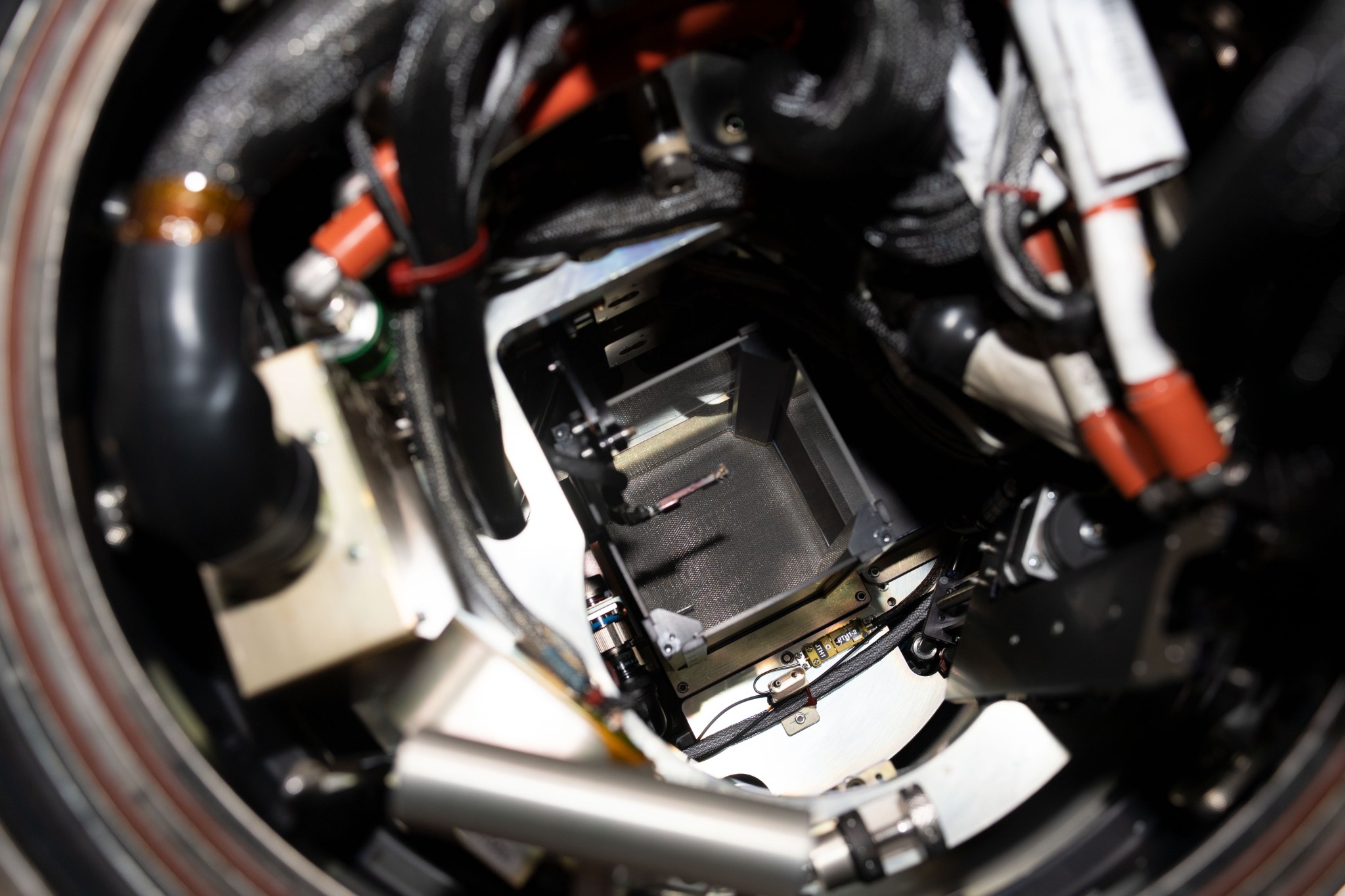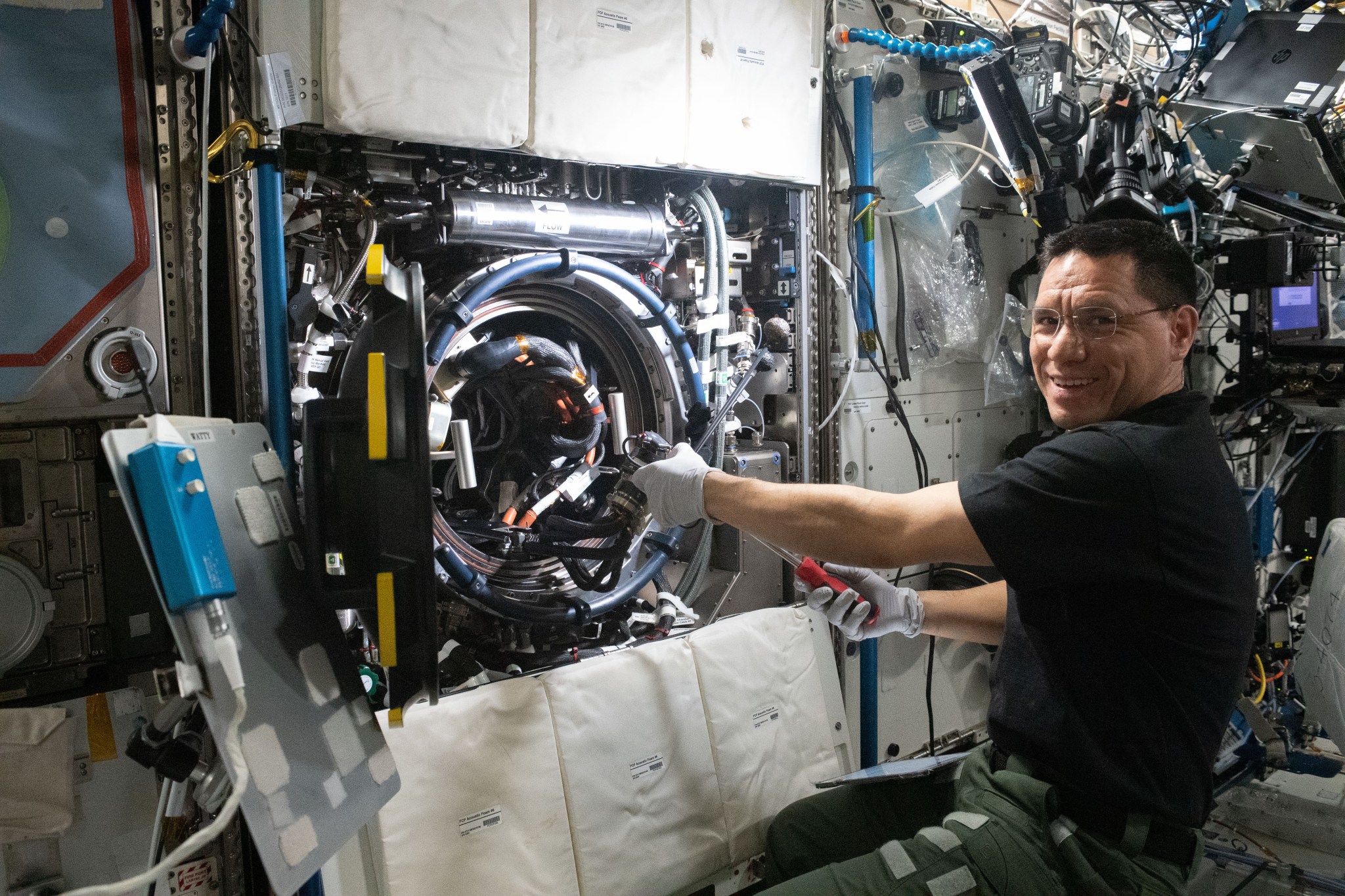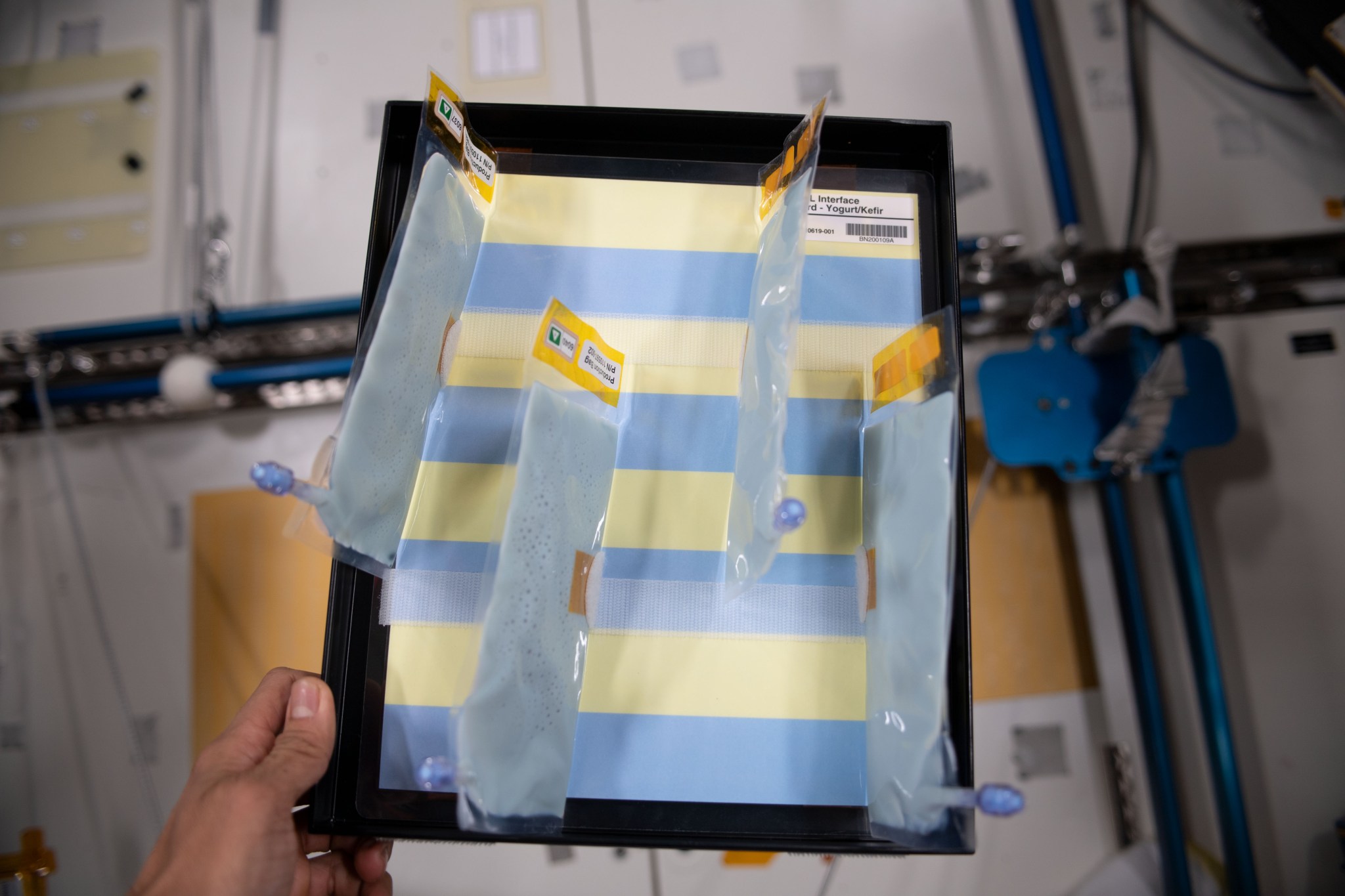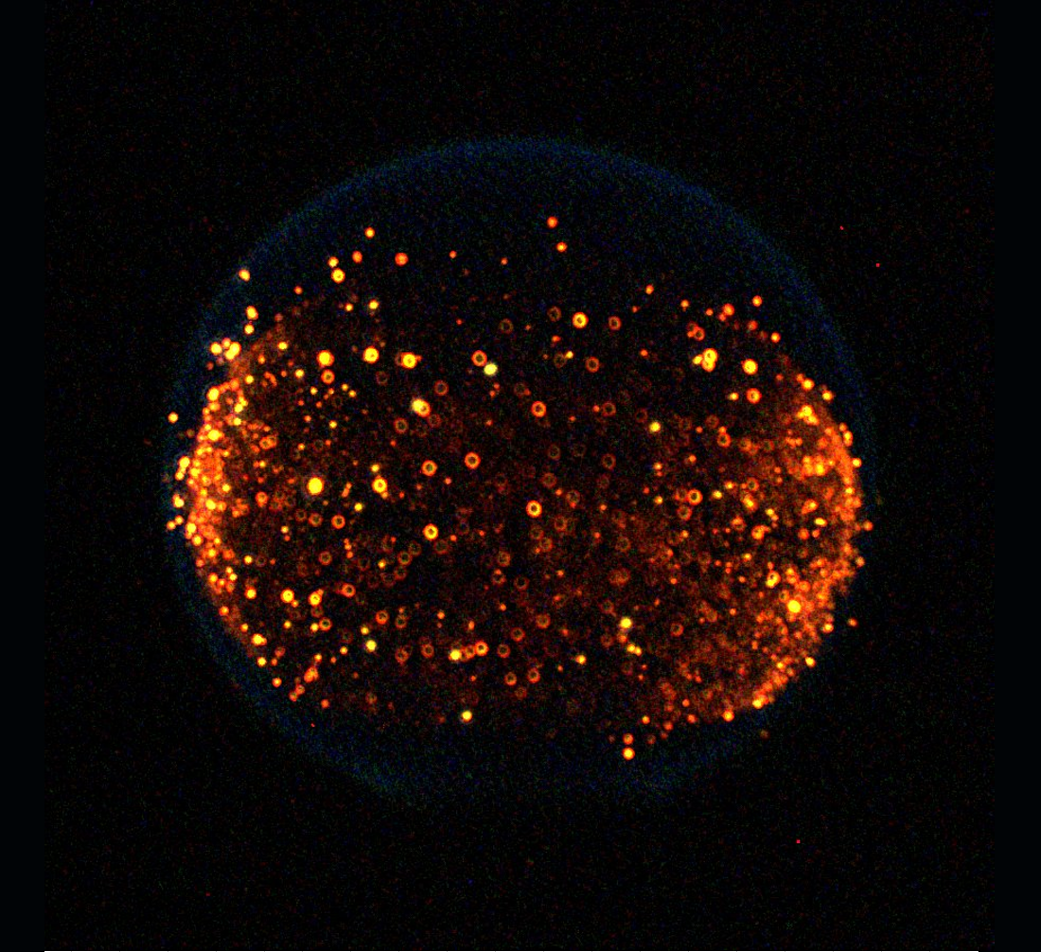Crew members aboard the International Space Station conducted scientific investigations during the week of May 1 that included examining the use of vibration as a method to organize particles in fluids in microgravity, studying material flammability in space, and testing a system to produce on-demand nutrients.
Here are details on some of the microgravity investigations currently taking place aboard the orbiting lab:
Good Particle Vibes
Particle Vibration, an investigation from ESA (European Space Agency), studies using vibration to organize particles in fluids. Fluids containing dispersed solid particles are used in a variety of industrial applications, including cooling systems, solar energy collectors, electronics, and production of materials for marine and aerospace engineering as well as composites, alloys, electrical conductors, and magnetic substances. The performance of such materials is linked to their microscopic structures, including the formation of solid and liquid patterns. Results could improve basic understanding of these patterns and their use in applications such as cooling systems and solar energy in space and on Earth. The investigation might even shed light on the formation of asteroids and planets, which involved mixtures of gas and solid matter in primordial nebulae. During the week, crew members downlinked experiment run images to the ground.
Measuring Material Flammability
SoFIE-GEL, part of a series of studies that examines burning in microgravity, measures heating in a fuel sample to determine how fuel temperature affects material flammability. Results could improve crew safety on future missions by informing selection of fire-resistant spacecraft cabin materials, validating flammability models, and supporting development of fire suppression techniques. Studying flames in space without the complications of buoyancy also helps improve computer models of combustion for terrestrial applications. Crew members replaced experiment samples during the week.
Nutrients On Demand
BioNutrients-2 tests a system to produce specific quantities of key nutrients from yogurt, a fermented milk product known as kefir, and a yeast-based beverage. Many foods and supplements degrade over time, and supplying adequate nutrition to crew members is one of the challenges facing future long-duration space missions to the Moon and Mars. The ability to produce nutrients during flight could help address this problem and reduce launch mass and volume as well. On Earth, producing vitamins and other biomolecules on-demand could help support human health in remote areas and those with limited supply of critical compounds that have a short shelf life. During the week, crew members prepared samples and placed them into incubation.
Other Investigations Involving the Crew:
- Actiwatch, a device worn on the wrist, detects body movement and light intensity to evaluate individual daily sleep-wake cycles. Understanding the effects of spaceflight on these cycles could support development of measures to improve sleep and contribute to better health and productivity among crew members on future missions and people with sleep issues on Earth.
- Veg-05 grows dwarf tomatoes and examines the effect of light quality and fertilizer on fruit production, microbial food safety, nutritional value, taste, and overall behavioral health benefits. Growing plants to provide fresh food and enhance the overall living experience for crew members supports future long-duration missions.
- JEM Water Recovery System from JAXA (Japan Aerospace Exploration Agency), demonstrates technology to generate potable water from urine. The system could contribute to life support systems on the space station and future exploration missions.
- Lumina, an investigation from ESA, demonstrates a dosimeter using optical fibers to monitor the radiation dose received by crew members in real time. Monitoring radiation exposure is key to crew safety, and this technology has potential applications in the medical and nuclear industries on Earth.
- Standard Measures uses cognition tests, sleep questionnaires, blood samples, and a variety of other data to examine how crew members adapt to living and working in space. Results also help monitor the effectiveness of countermeasures to maintain crew health and well-being, supporting future long-duration missions.
John Love, ISS Research Planning Integration Scientist
Expedition 69


































